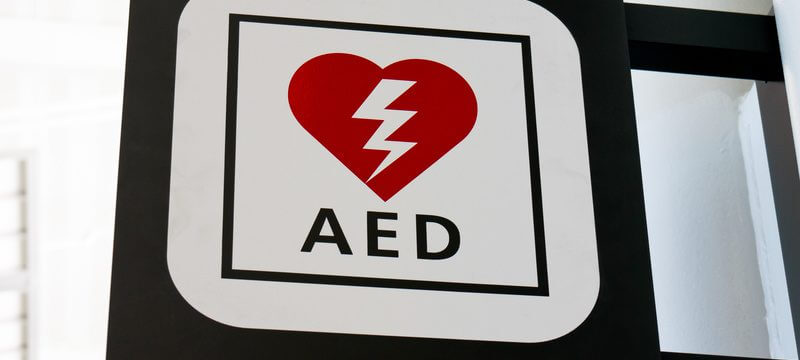
CPRNM® is a comprehensive directory designed to connect individuals and employers with top-tier training
providers including the AHA®, Red Cross®, and other training providers.*
Automated External Defibrillator Safety Precautions
Automated external defibrillators (AEDs) can be found in just about every public building where they can be used in the event of a cardiac arrest emergency. While most kits include a set of easy to follow illustrated instructions, it is generally preferred that they are used by someone who has taken certified training, through providers such as American Red Cross or American Heart Association; some online courses do provide training such as National CPR Foundation; we also provide certification training.
AEDs deliver an electrical shock to the heart muscles, and therefore, improper use can cause harm to the caregiver as well as the person on which it is being used.
The following is a checklist of basic precautions to observe while operating an AED. Some may seem common sense, but in an emergency situation, rescuers may not always remember to watch for potentially dangerous factors.
Check for Pulse
AEDs should not be used on a victim if a pulse can still be felt, as it could worsen their condition. If a pulse is not evident, the device can then be set up and activated to determine if there is any heart activity at all. The AED will confirm the lack of a pulse and the need for defibrillation.
Try CPR First
In most cases, it is worth trying several rounds of cardiopulmonary resuscitation (CPR) before using an AED. Make sure, however, that the device is not analyzing heart rhythm to avoid unwanted accidents. Most AEDs have a motion and CPR detectors, but rescuers will not have time to check for this, and will often forget to do so. The American Heart Association recommends CPR first and then AED use if CPR is not effective.
Be Careful During Transport
If the patient is in a moving vehicle or other means of transportation, extra care should be taken when using an AED. Movement can affect the accuracy of the analysis made by the device, which may cause it to withhold a shock when one is needed (or vice versa). Some devices are designed to know the difference between cardiac and external movement, but rescuers should still be cautious and periodically check for a pulse.
Stay Aware of Surroundings
During an emergency, it can be easy to overlook that handling an AED means managing electricity. The patient should not be in or near water, and any sweat present on the chest should be wiped clear. Besides affecting the device’s effectiveness, mixing water and electricity can cause severe burns. The patient should be in a dry, safe location and dried off before AED use.
Additionally, the patient should not be lying on a conductive surface, and any patches and materials present on the chest need to be removed. Nitroglycerine patches can explode when they come into contact with AED pads. Conductive surfaces can send the shock to others nearby, as can any physical contact with the patient while the device is activated. Any flammable items should immediately be removed from the area.
Avoid Cell Phones and Portable Radios
The waves created by these devices can affect the accuracy and performance of an AED. Obviously, someone will likely be using a cell phone to call for an ambulance; that person should stay at least six feet away from the patient. Any use of radios should also be kept distant from the patient.
 December 9, 2016
December 9, 2016 






